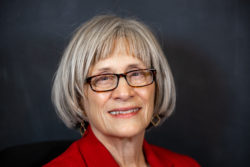 It was painful waking up to the terrorism news that suicide bombers in Sri Lanka had targeted hotels and churches during Easter services. Hundreds of people were killed and hundreds more were injured. At first, officials pointed to the perpetrators as a local group of radical Islamists espousing a terrorist ideology. Then they announced that international connections had helped design the attacks. At this point, Sri Lanka shut down online social networks, a move that would limit conspiracy theories, copy cat attempts, and violent revenge attempts. Was the ban prompted by guilt that warnings had been ignored, or by the experience days before in Paris?
It was painful waking up to the terrorism news that suicide bombers in Sri Lanka had targeted hotels and churches during Easter services. Hundreds of people were killed and hundreds more were injured. At first, officials pointed to the perpetrators as a local group of radical Islamists espousing a terrorist ideology. Then they announced that international connections had helped design the attacks. At this point, Sri Lanka shut down online social networks, a move that would limit conspiracy theories, copy cat attempts, and violent revenge attempts. Was the ban prompted by guilt that warnings had been ignored, or by the experience days before in Paris?
The burning of Paris’ Notre Dame Cathedral was a stunning global event. Images were captured in real time, interrupting international news programs with on-the-spot reporting. I was happily snack-munching during a boring debate over on France24 when the program cut to the scene of Notre Dame in flames. I stopped chewing and gaped in horror, not unlike the Parisians staring upwards from the street. How could this happen?
That was the question of the day and almost immediately, conspiracy theories of terrorist plots bombarded cyberspace. Some conspiracists targeted Jews, a hold-over from centuries ago when Jewish families built railroads across Europe and established banks that hastened the rise of the Industrial Revolution. More intense were attempts to weaponize Notre Dame by targeting Muslims. Despite officials point to renovation problems, they faulted liberal immigration laws for permitting the entry of so many Muslims and undermining Christian Europe. Paris officials tried to stop the online terrorism conspiracies and comparisons to 9/11 that were dangerously boosting fear and rage. Sri Lanka understood the need for these actions and was even more aggressive.
Given our sensitivity to terrorism, doesn’t it seem strange that the term is seldom applied to the burning of black churches in this country? Did you hear it when three historical black churches in Louisiana recently were burned? Do you know the names of these churches: St. Mary Baptist Church, Greater Union Baptist Church and Mount Pleasant Baptist Church? They had gained only modest support with a GoFundMe campaign to help them rebuild and were stuck at about $50,000. With a burning Notre Dame in the spotlight, our own loss of historic churches became visible and the campaign shot up to 1.8 billion dollars.
Yet, despite the increased awareness, the word “terrorist” isn’t being applied to the perpetrator, Holden Matthews. I wonder if we have a ho-hum attitude towards the burning of back churches because it’s a familiar story in American history. When I worked in Tulsa shortly after the Oklahoma City bombing, the burning, defacement and vandalism of black churches were frequent events. Our “Say No to Hate Coalition” prepared a press release template that could be sent to the media whenever an incident occurred. With so many incidents, there wasn’t time to develop separate releases for each attack.
- Sacred Calendars and Holidays Define Us — by Deborah Levine - December 1, 2025
- The hurricane of stupidity – by Deborah Levine - November 7, 2025
- Engage in community. Having fun counts! – by Deborah Levine - October 31, 2025

Excellent, no nonsense article!
?